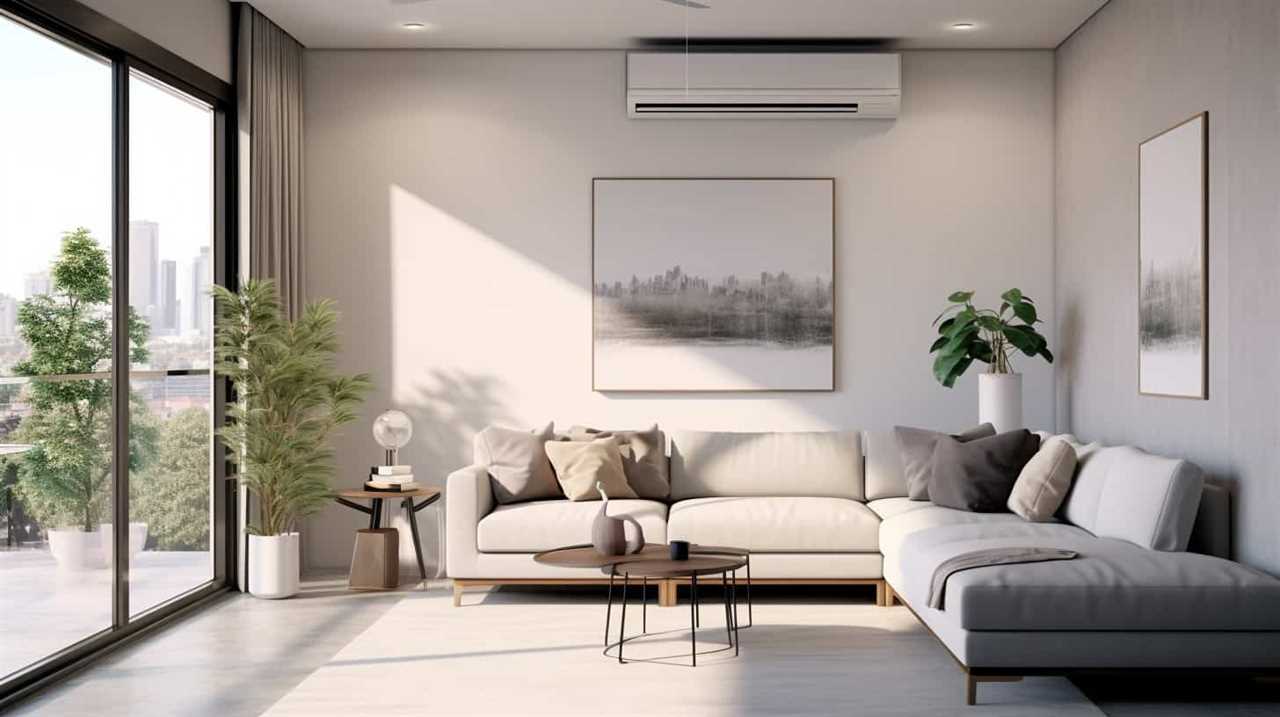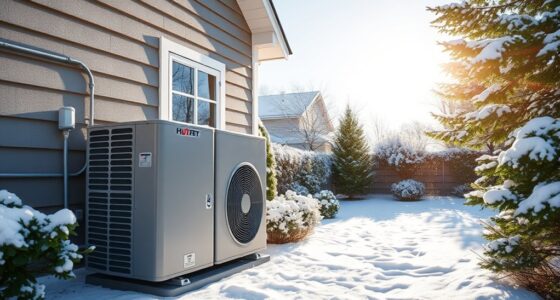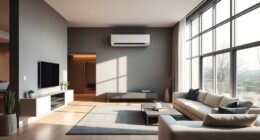Do you frequently experience being either too cold or too hot inside your home? Don’t worry, we’ve got you covered with 11 essential tips on how to efficiently utilize a heat pump for optimal temperature control in your living area.
Imagine coming home to the perfect temperature every day, without wasting energy or breaking the bank. With regular maintenance, proper insulation, and understanding the ideal temperature settings, you can create a comfortable and efficient environment for your family.
Let us guide you through the process of achieving the ultimate home comfort experience.
Key Takeaways
- Regular maintenance, including inspections, cleanings, and filter replacements, is crucial for improving efficiency and extending the lifespan of a heat pump.
- Proper insulation and energy-efficient practices, such as sealing air leaks and installing insulation, reduce the required size of the heat pump and maximize energy efficiency.
- Adjusting temperature settings based on preferences and weather conditions, as well as understanding the different heat pump modes, allows for optimal temperature control and energy efficiency.
- Utilizing programmable thermostats, maximizing airflow, and managing humidity levels through proper ventilation and the use of humidifiers/dehumidifiers are important for energy efficiency and maintaining a comfortable indoor environment.
Regular Maintenance for Improved Performance
We should regularly maintain our heat pump to ensure optimal performance. Regular maintenance is essential for improving efficiency and extending the lifespan of our heat pump. By scheduling regular inspections and cleanings, we can prevent any potential issues from arising and ensure that our heat pump operates at its maximum potential.
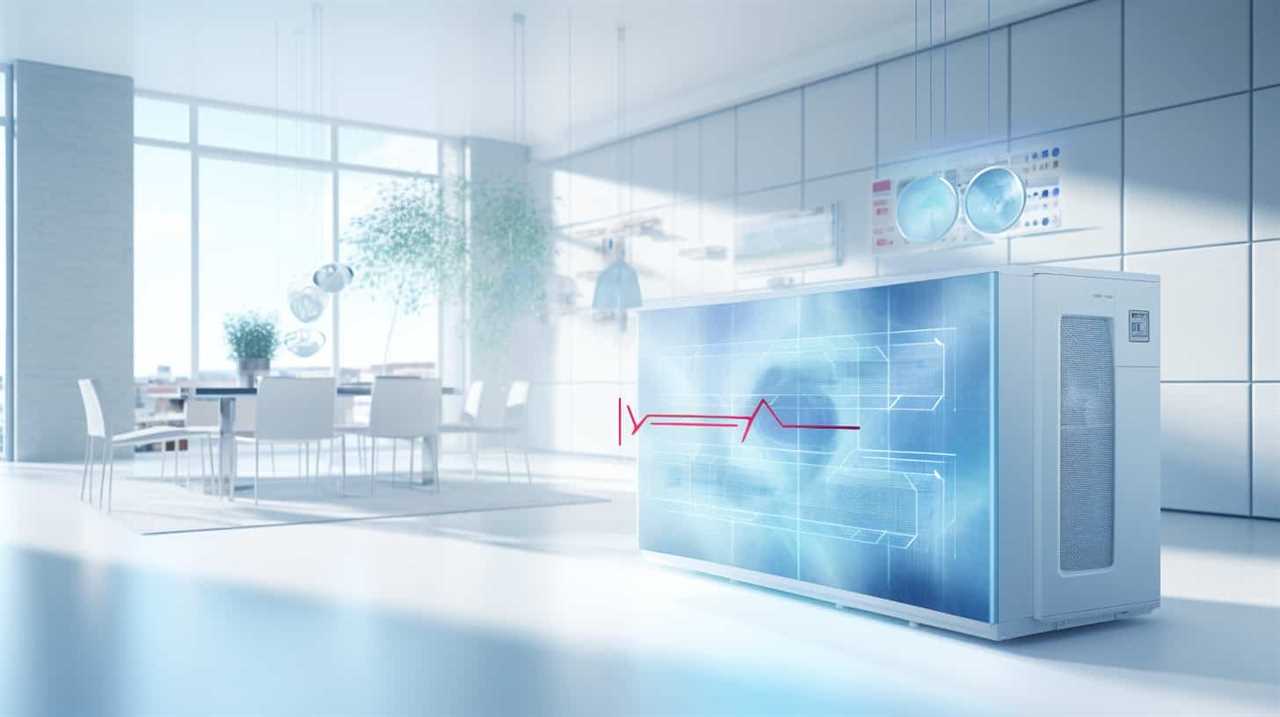
It’s important to clean or replace air filters regularly to maintain proper airflow and prevent dust and debris from accumulating. Additionally, checking and cleaning the evaporator and condenser coils can help improve heat transfer and overall efficiency. Lubricating moving parts and inspecting electrical connections are also crucial steps in maintaining our heat pump.
Choosing the Right Heat Pump Size for Your Home
When it comes to choosing the right heat pump size for your home, there are several sizing considerations that should be taken into account.
The size of your home, the climate in your area, and the insulation levels in your home are all important factors to consider.
It’s crucial to match the heat pump’s capacity with the heating and cooling needs of your home, as an oversized or undersized unit can lead to inefficiency and discomfort.
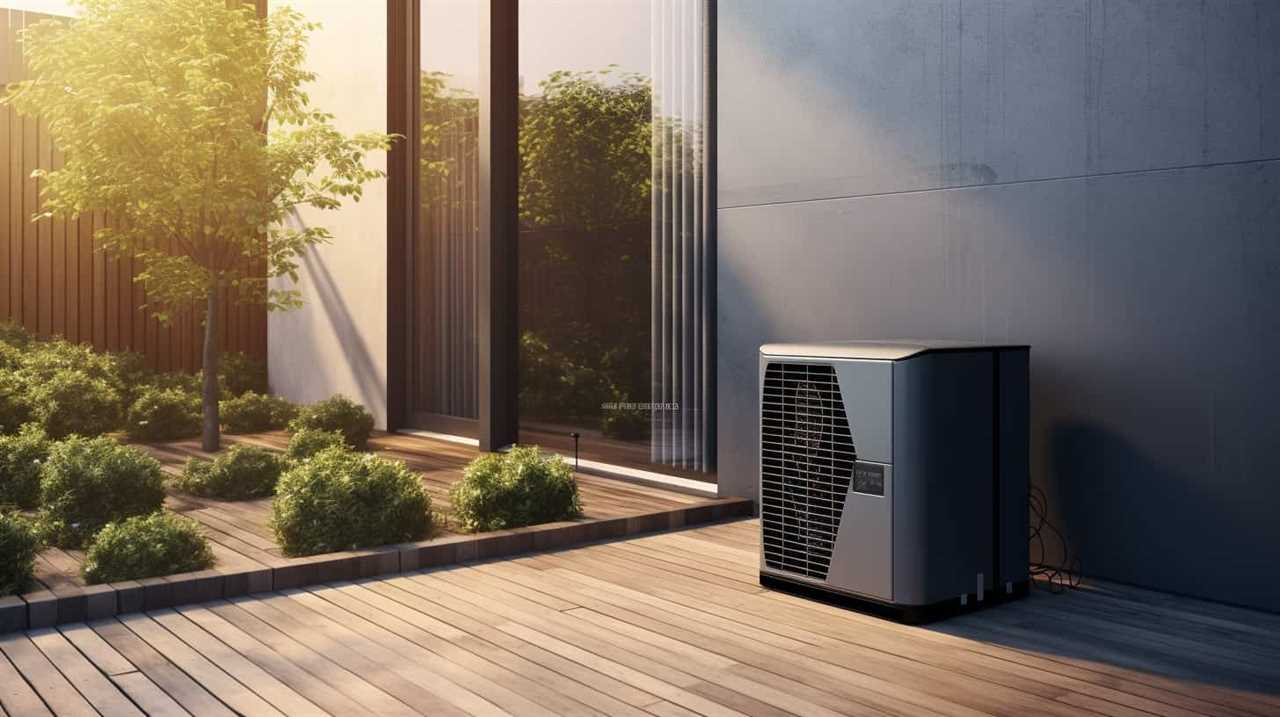
Sizing Considerations for Efficiency
Choosing the correct size of heat pump for our home is crucial for ensuring optimal efficiency and climate control. When it comes to sizing considerations for efficiency, there are several factors to keep in mind:
Climate conditions: The climate in which we live plays a significant role in determining the size of heat pump needed. Warmer climates require smaller heat pumps, while colder climates require larger ones.
Insulation levels: Proper insulation is essential for maintaining energy efficiency. Homes with better insulation will require smaller heat pumps.
Square footage: The size of our home directly impacts the size of the heat pump required. Larger homes will need larger heat pumps to effectively heat or cool the entire space.

Energy efficiency rating: Opting for energy efficient heat pump models can help us save on energy bills and reduce our carbon footprint.
Matching Heat Pump Capacity
Determining the appropriate heat pump size for our home involves matching the heat pump capacity to our specific heating and cooling needs. This is crucial for achieving optimal home climate control and maximizing energy efficiency. When it comes to matching heat pump efficiency, it’s important to consider factors such as the size of our home, insulation levels, and local climate conditions.
Choosing the right heat pump brand is also essential in ensuring long-term performance and reliability. Conducting thorough research and consulting with HVAC professionals can help us find the right heat pump brand that meets our requirements in terms of capacity, energy efficiency, and cost-effectiveness.
Proper Insulation for Energy Efficiency
We can improve energy efficiency in our homes by properly insulating them. Insulation plays a crucial role in reducing heat transfer and maintaining a comfortable indoor environment. Here are some energy-saving techniques and insulation materials to consider:
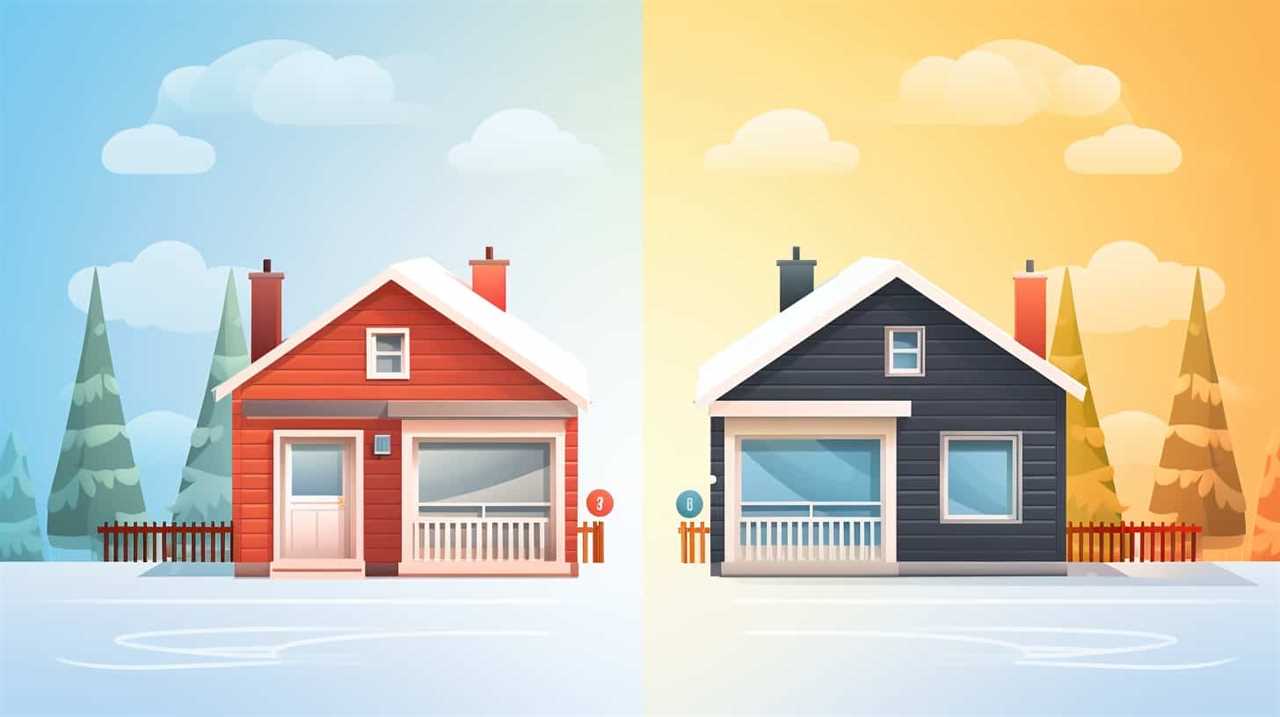
Sealing air leaks: Identify and seal any gaps or cracks in doors, windows, and walls to prevent air leakage, keeping your home well-insulated.
Adding insulation: Install insulation in walls, attics, and crawl spaces to reduce heat loss or gain, ensuring optimal energy efficiency.
Using reflective barriers: Reflective barriers, such as radiant barriers or reflective insulation, can reflect heat away from your home, reducing the need for excessive cooling.
Choosing the right insulation material: Opt for insulation materials with high R-values, such as fiberglass, cellulose, or spray foam, to maximize thermal resistance and energy savings.

Setting the Ideal Temperature for Comfort
To achieve optimal comfort, we should regularly adjust the temperature settings of our heat pump based on our preferences and the current weather conditions.
Setting temperature preferences is an essential step in creating a comfortable home environment. By adjusting the thermostat settings, we can ensure that our heat pump maintains the desired temperature throughout the day.
During colder weather, we can set the temperature higher to keep our home warm and cozy. Conversely, during hotter weather, we can lower the temperature to create a cool and refreshing atmosphere.
It’s important to strike a balance between comfort and energy efficiency. By finding the ideal temperature that suits our needs, we can create a comfortable living space while also saving on energy costs.
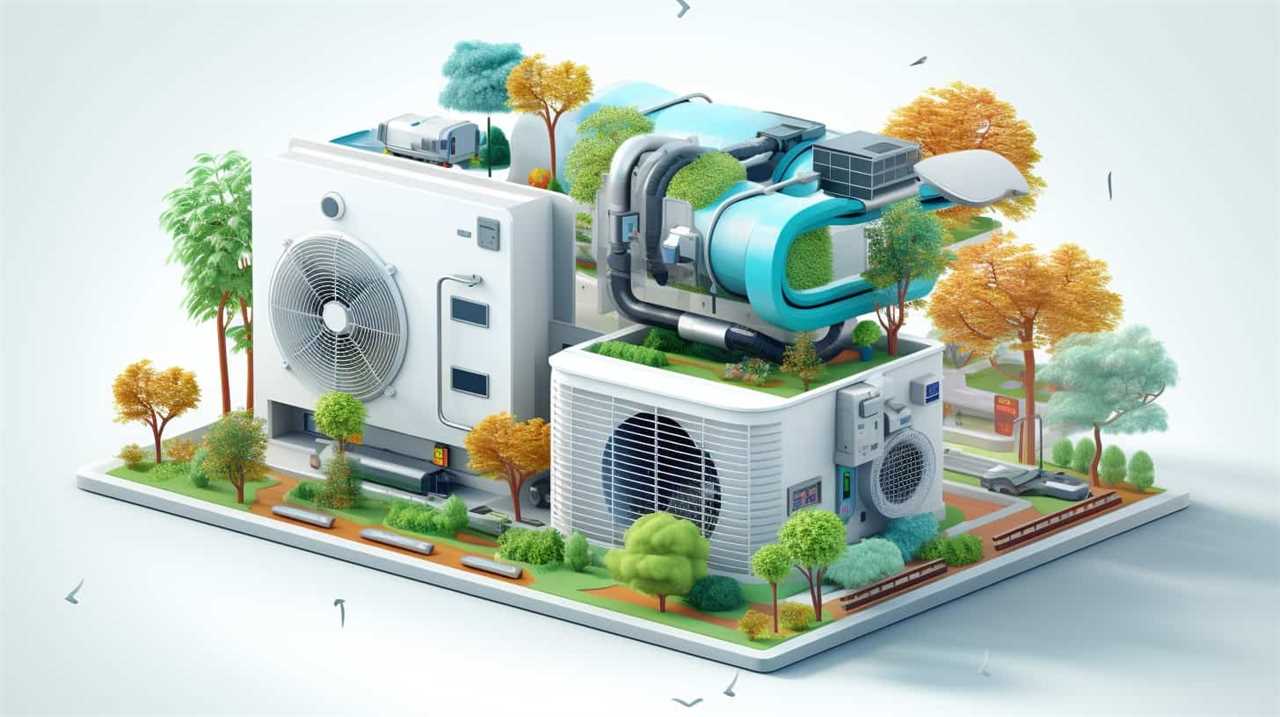
Regularly adjusting our heat pump’s temperature settings allows us to maintain optimal comfort throughout the year.
Understanding Heat Pump Modes and Settings
To effectively manage our heat pump and achieve optimal home climate control, it’s important to understand the various modes and settings available. Here are some key points to consider:
Heat Pump Modes: Our heat pump offers different modes to suit varying weather conditions. The most common modes include heating, cooling, and auto mode, which automatically switches between heating and cooling based on the desired temperature setting.
Temperature Settings: We can adjust the temperature settings to maintain a comfortable indoor environment. However, it’s crucial to strike a balance to ensure heat pump energy efficiency while still providing adequate heating or cooling.

Fan Speed: The fan speed setting allows us to control the airflow in our home. Higher fan speeds can distribute air more quickly, while lower speeds provide a quieter operation.
Heat Pump Maintenance Checklist: Regular maintenance is essential to keep our heat pump running efficiently. This includes cleaning or replacing air filters, inspecting outdoor units for debris, and scheduling professional maintenance checks.
Understanding these heat pump modes and settings, along with following a maintenance checklist, will help us optimize energy efficiency and maintain a comfortable home climate.
Utilizing Programmable Thermostats for Optimal Control
When it comes to optimizing control over home climate, utilizing programmable thermostats offers several benefits.
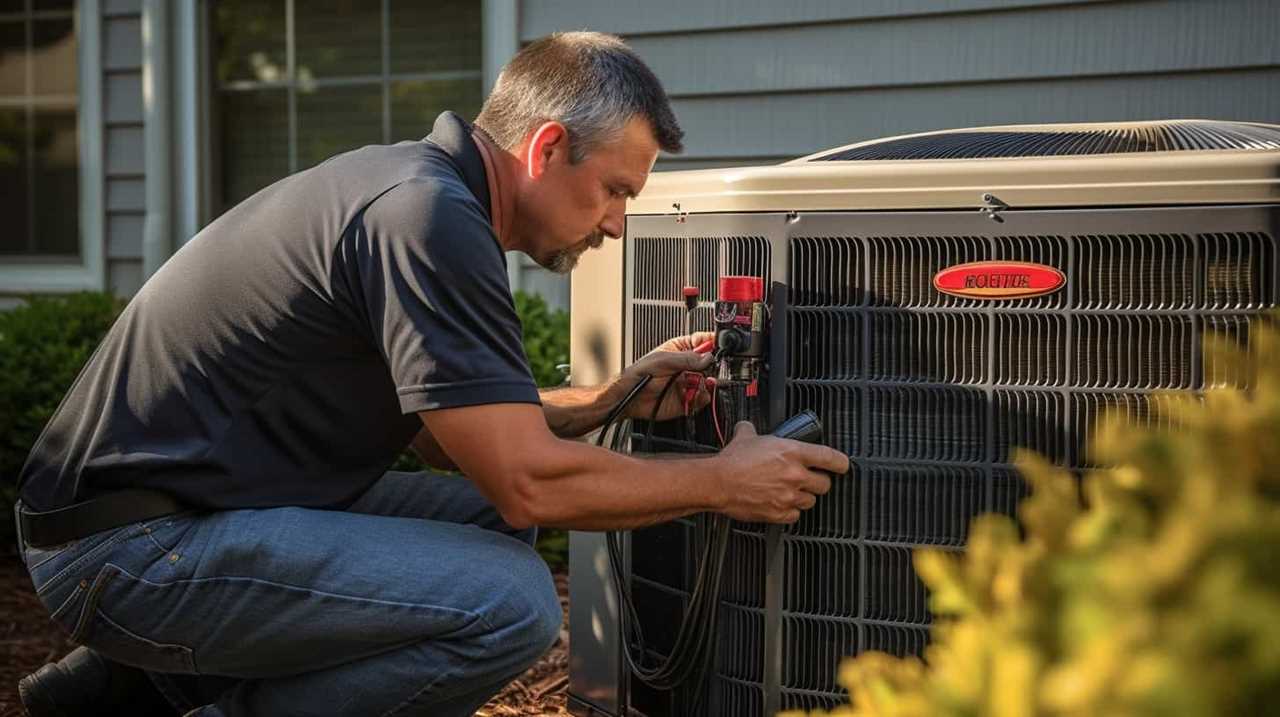
Firstly, these thermostats allow us to create energy-saving temperature schedules, ensuring that our homes are always at the right temperature without wasting unnecessary energy.
Additionally, programmable thermostats provide the convenience of remote control, allowing us to adjust the temperature from anywhere in the house.
Energy-Saving Temperature Schedules
How can we effectively use programmable thermostats to create energy-saving temperature schedules for optimal home climate control?
Utilizing energy-saving temperature presets on smart thermostats is a great way to achieve this goal. By programming your thermostat to adjust the temperature settings based on your daily routine, you can ensure that your home is always comfortable while minimizing energy consumption.
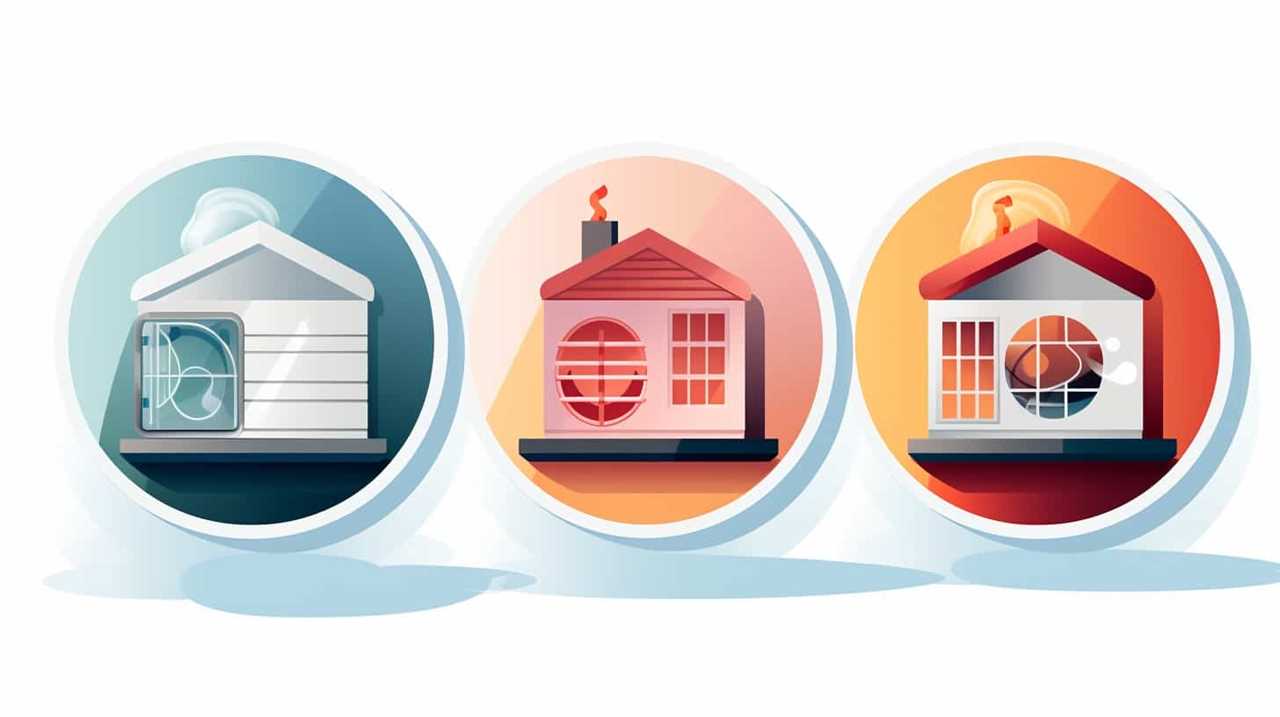
Here are some tips for creating energy-saving temperature schedules:
- Set the temperature lower during times when you’re away from home or asleep.
- Gradually adjust the temperature before waking up or returning home to maintain comfort.
- Use zoning features to control the temperature in different areas of your home independently.
- Take advantage of features like geofencing to automatically adjust the temperature when you leave or return home.
Remote Control Convenience
We can enhance our home climate control by utilizing programmable thermostats and taking advantage of remote control convenience. With remote control features and smart home integration, we can easily adjust the temperature from anywhere in the house or even when we’re away. This convenience allows us to come home to a comfortable environment or save energy by adjusting the temperature when we’re not home.
To further emphasize the benefits of remote control convenience, let’s take a look at the table below:
| Remote Control Features | Benefits |
|---|---|
| Adjust temperature from anywhere | Convenient and saves energy |
| Set temperature schedules | Optimize comfort and energy savings |
| Monitor energy usage | Track and manage energy consumption |
Maximizing Airflow for Efficient Heating and Cooling
To maximize airflow and ensure efficient heating and cooling, we need to regularly clean and maintain our HVAC system. Here are some tips to help you achieve optimal airflow and energy efficiency:

Clear any obstructions: Make sure there are no furniture, curtains, or other objects blocking the vents or airflow paths.
Clean or replace air filters: Clogged filters restrict airflow and reduce system efficiency. Regularly clean or replace them to improve air quality and energy efficiency.
Check ductwork for leaks: Leaky ducts can cause air to escape, resulting in reduced airflow and energy loss. Seal any leaks to improve efficiency.
Schedule professional maintenance: Regular maintenance by a qualified HVAC technician can ensure that your system is operating at peak performance, maximizing airflow and energy efficiency while improving air quality for your health benefits.
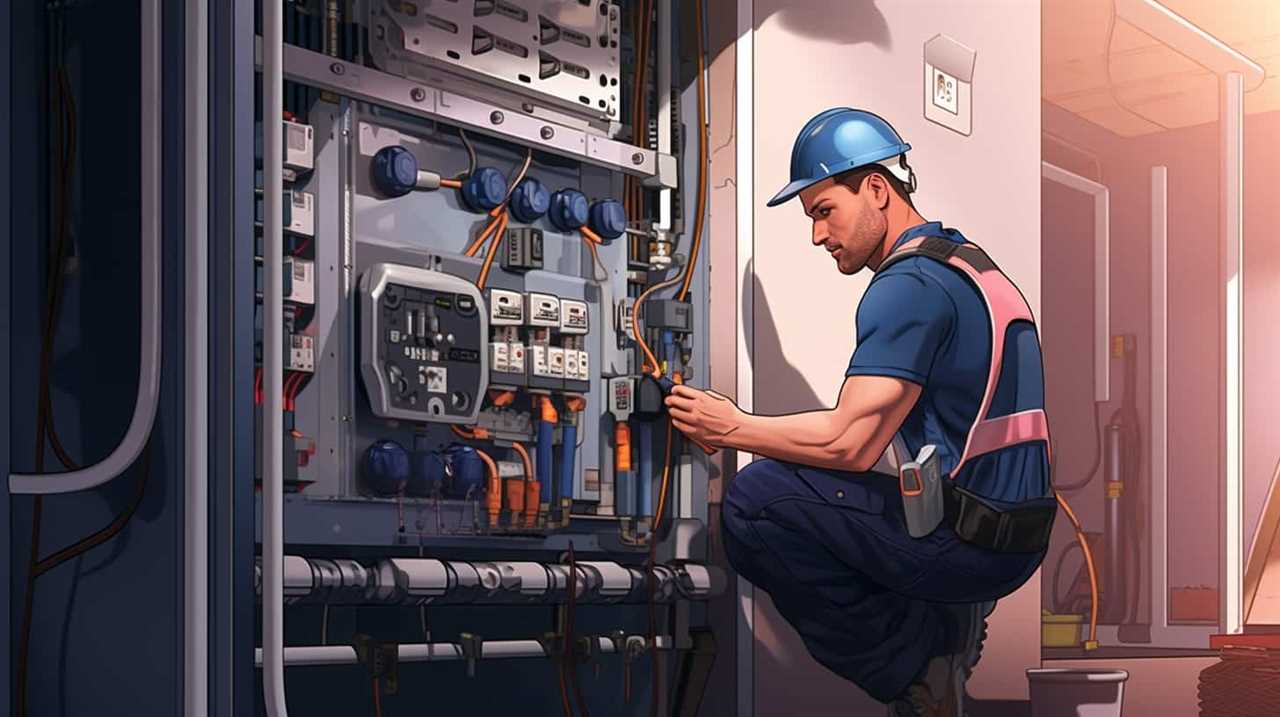
Protecting Your Heat Pump From Outdoor Elements
To ensure the longevity and optimal performance of your heat pump, it’s crucial to protect it from the harsh outdoor elements.
One effective way to do this is by covering the heat pump properly when it isn’t in use. This will shield it from rain, snow, and debris that can potentially damage its components.
Additionally, regular maintenance and cleaning are essential to keep the heat pump functioning efficiently and to prevent any potential issues caused by dirt or debris buildup.
Covering Heat Pump Properly
Our heat pump’s proper covering is essential for protecting it from outdoor elements. Here are some tips for covering your heat pump installation effectively:

Use a weather-resistant cover: Invest in a cover specifically designed to withstand the elements and protect your heat pump from rain, snow, and UV rays.
Maintain proper airflow: Ensure that the cover allows for adequate ventilation, as restricted airflow can negatively impact heat pump efficiency.
Secure the cover properly: Use straps or fasteners to secure the cover tightly, preventing it from being blown away by strong winds.
Regularly inspect and clean: Regularly check the cover for any signs of damage or wear. Clean it as needed to remove debris and maintain its effectiveness.
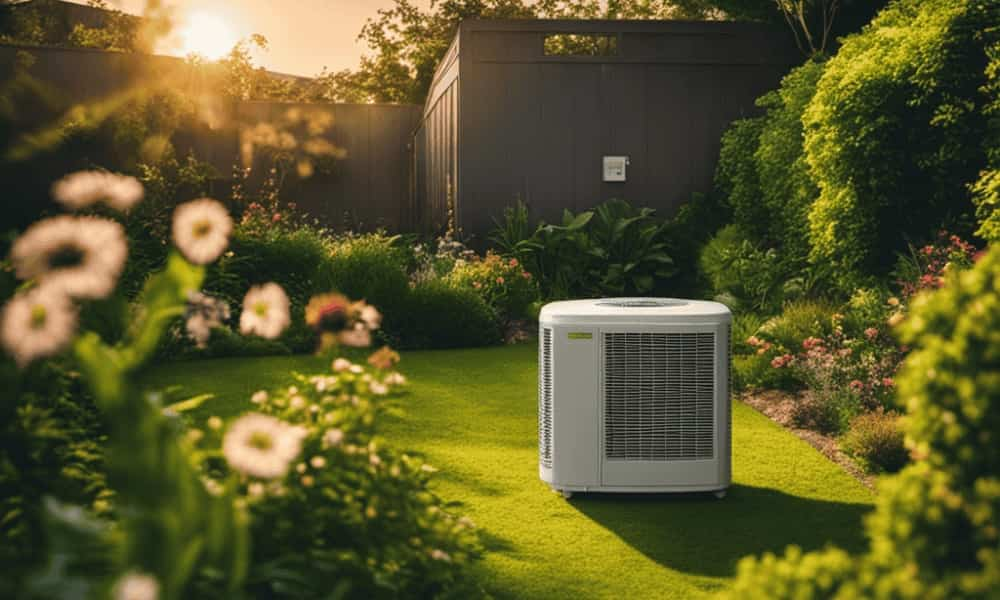
Regular Maintenance and Cleaning
We recommend scheduling regular maintenance and cleaning to protect our heat pump from outdoor elements.
Regular maintenance is crucial to ensure the optimal performance and longevity of the heat pump. It’s recommended to have a professional technician inspect and service the heat pump at least once a year. This will help identify any potential issues and prevent costly repairs in the future.
In addition to regular maintenance, proper cleaning techniques are essential to keep the heat pump functioning efficiently. It’s important to regularly clean the outdoor unit by removing any debris such as leaves, dirt, or grass clippings. This can be done by gently hosing down the unit and using a soft brush to remove any stubborn dirt.
Managing Humidity Levels for Enhanced Comfort
Maintaining optimal humidity levels is crucial for enhanced comfort in our home climate. Proper humidity control not only helps us feel more comfortable, but it also promotes better indoor air quality and protects our home from potential damage caused by excessive moisture. Here are some key strategies and benefits of managing humidity levels:
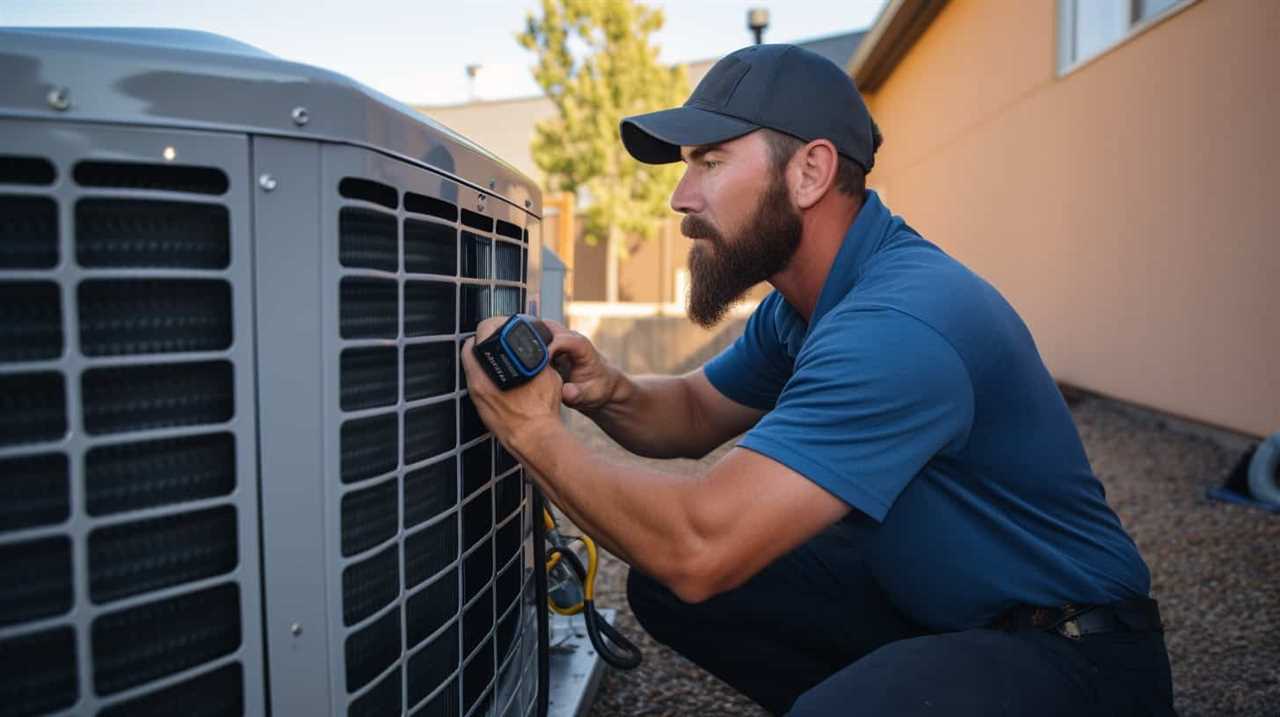
- Installing a dehumidifier can help remove excess moisture from the air, preventing mold growth and reducing the risk of respiratory issues.
- Monitoring humidity levels with a hygrometer allows us to adjust our HVAC system or dehumidifier settings accordingly.
- Ventilating our home properly, such as using exhaust fans in bathrooms and kitchens, helps to remove moisture from the air.
- Sealing air leaks and insulating our home can prevent humid outdoor air from entering and causing moisture problems.
By implementing these humidity control strategies, we can create a more comfortable and healthier indoor environment.
Now, let’s move on to troubleshooting common heat pump issues.
Troubleshooting Common Heat Pump Issues
Let’s now address some common heat pump issues that may arise and how to troubleshoot them.
When it comes to troubleshooting common heat pump problems, there are a few key issues that homeowners often encounter. One of the most common problems is the heat pump not turning on or not cooling or heating effectively. This can be caused by a faulty thermostat, a tripped circuit breaker, or a refrigerant leak.
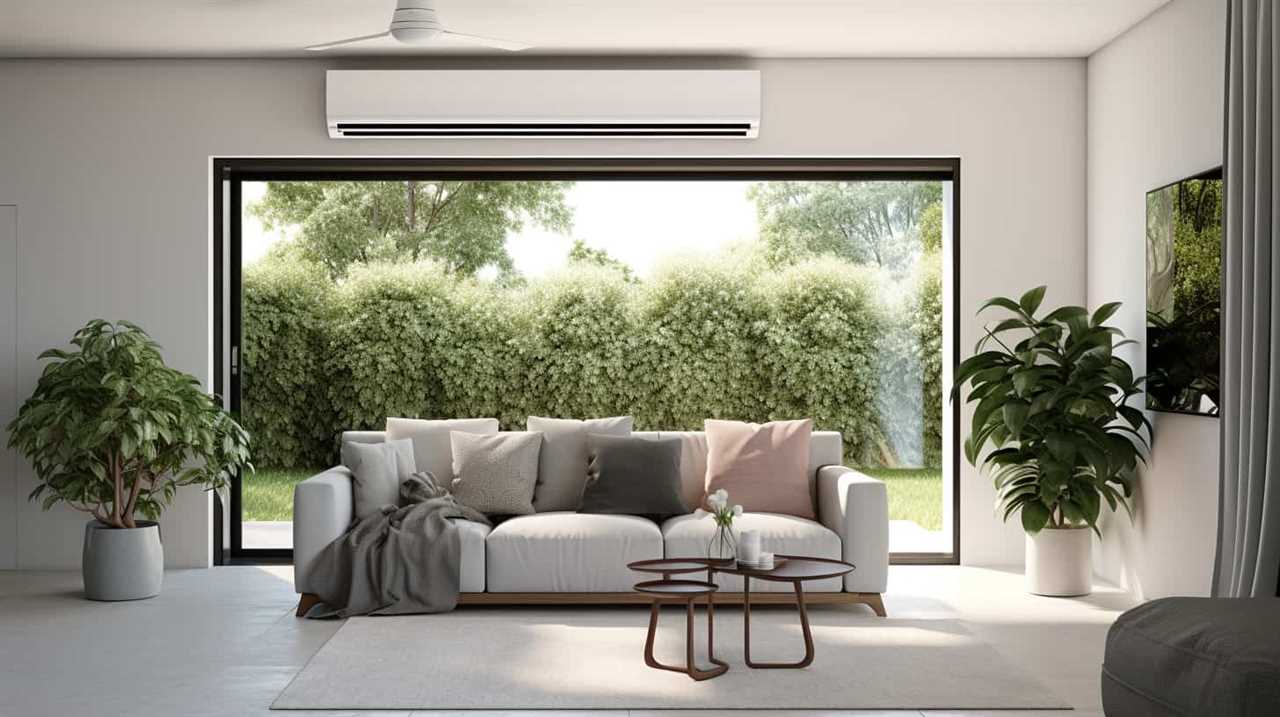
To troubleshoot this issue, check the thermostat settings, reset the circuit breaker, and inspect for any signs of refrigerant leakage.
Another common problem is the heat pump blowing cold air instead of warm air. This could be due to a dirty air filter, a malfunctioning reversing valve, or low refrigerant levels.
To resolve this issue, clean or replace the air filter, check the reversing valve, and ensure the refrigerant levels are adequate.
Energy-Saving Tips for Lower Utility Bills
By implementing energy-saving practices and making small adjustments to our daily routines, we can effectively lower our utility bills. Here are some tips to help you lower your energy consumption and save money on your monthly bills:
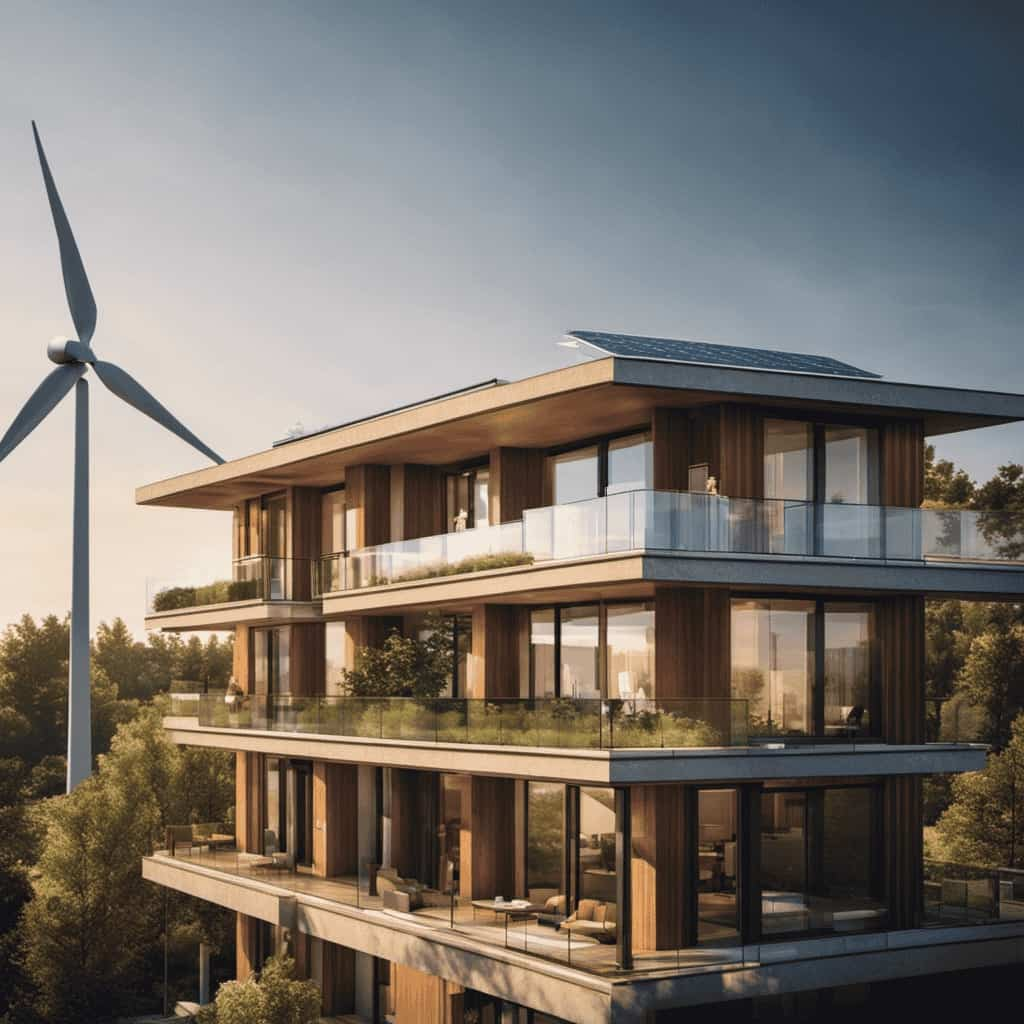
Upgrade to energy-efficient appliances: Replace old, energy-hungry appliances with new, energy-efficient models that have a high Energy Star rating.
Use smart home integration: Invest in smart home technology that allows you to control and monitor your energy usage remotely. This can help you identify areas where you can reduce energy consumption and save money.
Optimize your thermostat settings: Set your thermostat to a comfortable temperature while minimizing energy usage. Consider using programmable thermostats or smart thermostats that can automatically adjust temperature settings based on your preferences and occupancy patterns.
Practice energy-saving habits: Simple habits like turning off lights when not in use, unplugging electronics when not in use, and using natural light whenever possible can add up to significant energy savings over time.

Frequently Asked Questions
How Often Should I Schedule Regular Maintenance for My Heat Pump?
We recommend scheduling regular maintenance for your heat pump to ensure optimal performance and energy efficiency. By doing so, you can extend the lifespan of your system and prevent costly repairs in the long run.
What Factors Should I Consider When Choosing the Right Heat Pump Size for My Home?
When choosing the right heat pump size for your home, consider factors such as the square footage, insulation, and climate conditions. Proper heat pump installation ensures optimal home climate control and improves heat pump efficiency.
How Can I Improve the Insulation in My Home to Increase Energy Efficiency?
To improve insulation and increase energy efficiency, we can employ various techniques such as sealing air leaks, adding insulation to walls and ceilings, and upgrading windows and doors. These energy-saving upgrades help create a more comfortable and cost-effective home environment.
What Is the Ideal Temperature to Set My Heat Pump for Optimal Comfort?
The ideal temperature for optimal comfort with a heat pump is typically between 68-72 degrees Fahrenheit. This range ensures energy efficiency while providing a comfortable living environment for all occupants.
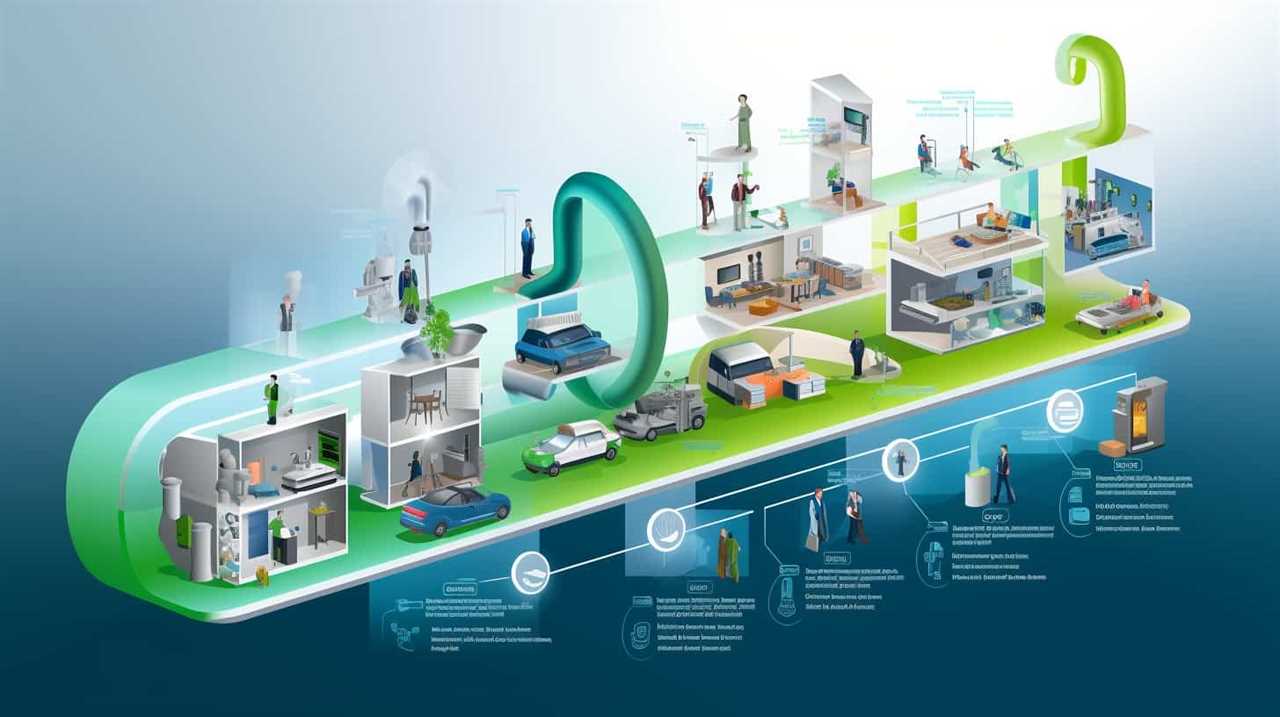
What Are the Different Heat Pump Modes and Settings, and How Do They Affect Heating and Cooling?
Heat pump modes and settings play a crucial role in heating and cooling, impacting energy consumption. Understanding these modes helps optimize home climate control. It’s important to consider the efficiency of each setting for optimal comfort and energy efficiency.
What Are the Benefits of Heat Pumps for Home Climate Control?
Heat pumps for climate control offer numerous benefits for home owners. They provide both cooling and heating capabilities, ensuring comfortable indoor temperatures in any season. Their energy efficiency helps lower utility bills, while their quiet operation ensures a peaceful living environment. Additionally, heat pumps can improve air quality by reducing humidity and filtering out pollutants, promoting a healthier home.
Conclusion
In conclusion, by following these 11 heat pump tips, you can achieve optimal home climate control.
It’s ironic how such a small device can have such a big impact on your comfort and energy efficiency.
So, take the time to maintain your heat pump, choose the right size, insulate properly, and manage settings effectively.
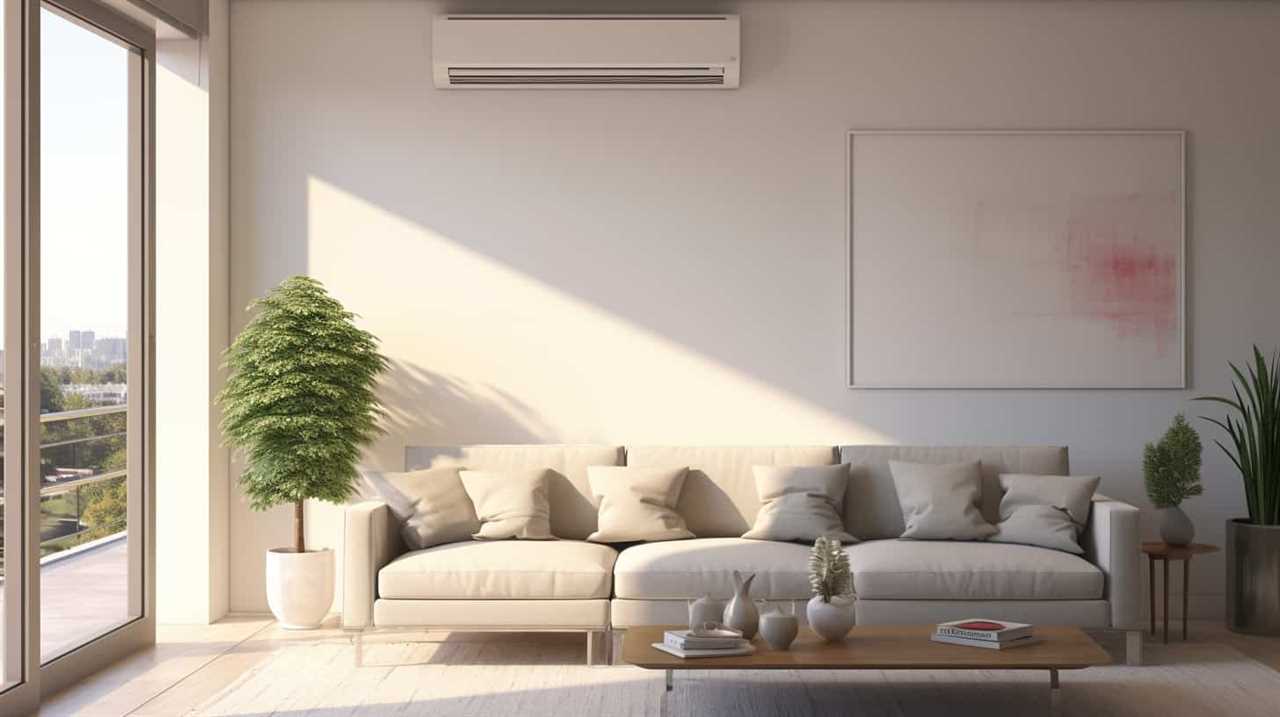
By doing so, you’ll not only stay comfortable but also save on utility bills.
Stay cool, my friends!


